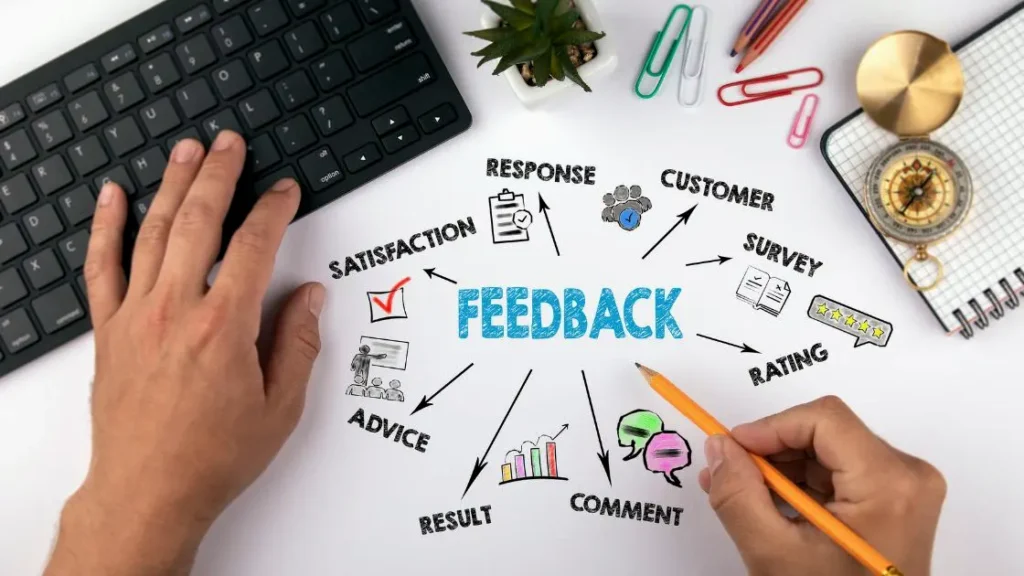G’day mates! Alex here from Meta Trends to chat about one of my favourite topics – using SEO to amplify your content marketing. I’ve worked with tons of businesses to refine their online presence, and let me tell you, with the right SEO strategy, your content can thrive beyond your wildest surf dreams! Stick around as I break it down…
A Quick Intro to Content Marketing
First things first: What exactly is content marketing? It’s all about creating excellent, valuable content tailored to your customers to attract attention and build trust in your brand. The types of content vary widely, from blog posts, videos, eBooks, emails, etc.
But here’s the key thing that differentiates it from traditional marketing – instead of directly selling, the focus is consistently providing the stuff your audience finds engaging and educational.
For example, an eco-tourism company could create content about respecting coral reefs, stories from local guides, or “top 10” lists of sustainable destinations.
Content marketing aims to bring value to readers first, not just shove sales pitches in their faces. By taking this informative approach, you’ll:
- Educate and build trust with potential customers
- Establish thought leadership in your niche
- Attract more qualified traffic to your site

Suitable for some sweet blog posts and videos, aye? But to amplify the impact of your epic content, you need to optimise it for search engines…which is where SEO slides in!
SEO 101 – The Essentials for Ranking Well
To kick things off on the right foot, let’s cover the basics of SEO or “Search Engine Optimization.”
What is SEO Exactly?
Simply put, SEO is about improving your site to rank higher in search engines for relevant terms (called keywords) related to your brand. The higher you type, the more visibility you get – leading to more qualified traffic clicking through from search to visit your site.
Why Bother with SEO in the First Place?
Because most people use search as their primary method for discovering and researching products online, popularity in search results can make or break whether you get found! If I want to see “local surf gear,” you can bet I’ll Google it rather than randomly stumbling on some tiny surf shop site.
How Do the Search Engines Decide Where to Rank Sites?
Now, this is where things get interesting! Search engines use unique algorithms (fancy math formulas) to analyse millions of web pages and determine which ones are most relevant for different search queries.
They evaluate all sorts of signals – from keywords to backlinks, site speed, user engagement metrics and more. Each engine has its proprietary methods, too, though Google dominates globally.
But in general, higher-quality sites with a good user experience, relevant content, and trustworthy backlink profiles (sites linking to it) get rewarded by ranking higher!
Why is SEO Vital for Content Marketing?
Alright, SEO is essential for any website – but it plays a crucial role in ensuring your awe-inspiring content gets seen!
Creating remarkable content isn’t enough…you need a solid distribution method, too. Think about it like this: you wouldn’t go through all the effort of making an epic surf film and then not promote the premiere, right?!
In digital marketing, SEO is your megaphone 📣 blasting your content to the world 🌎 for all to see! It helps amplify and distribute what you publish by improving its visibility in search.
Here are some of the key reasons why you need to optimise your content for search:

Increased Organic Reach & Traffic
Top-ranking content can massively grow your site traffic. For instance, on page 1, Google results drive over 90% of search clicks! Good luck getting any surfer’s attention if you show up on page 2 or below, as they’ll likely never scroll that far. So, ranking high is critical for discovery.
Improved Brand Awareness & Credibility
When people see your content appearing right at the top for industry keywords, it establishes authority and trust quickly. They’ll perceive your brand as a legitimate leader in the space.
Higher Conversion Rates
Scoring the coveted page 1 spot means directing seriously qualified traffic to your site – surfers actively looking for solutions you provide! These high-relevancy visitors convert into customers at much higher rates.
Cost Savings
Unlike paid ads, organic search traffic is FREE once you do the upfront work of optimising pages. And nothing beats free, right cobber? Surf’s up! With SEO, you can keep riding the wave of targeted traffic over the long run without ongoing expenses.
As you can see, SEO delivers the audiences and amplifies content without big ad budgets or needing famous influencers (though that helps, too!).
Ok, let’s paddle out and dive right into tactics…
Crafting SEO-Friendly Content That Rocks
Alright, it’s time for the good stuff! Optimising content isn’t just about awkwardly stuffing keywords everywhere – it’s about understanding what searchers want and creating tailored pages.
Think about what questions your potential customers ask in your niche – and craft content precisely about giving them unique answers! And weave in keywords and links naturally along the way.
Here are my top tips for creating traffic-attracting content fuelled by SEO…
Kick Things Off With Keyword Research
I consider keyword research the foundation of any good content plan. Before writing, see what search terms drive visits in your niche using Google’s handy Keyword Planner tool.
Or check out SEMRush for revealing keywords your competitors rank well for, too!

Once you start researching, look at search volume and competing pages (how saturated focus keywords are). Find that sweet spot of “not crazy popular, but still good traffic potential.”
For our surf shop example, target long tail variations like [environmentally friendly surfgear] instead of the massively competitive [surfshop]. Have you got it? Rad!
TLDR: Research before creating content to uncover valuable search phrases people use. It pays, trust me!
Entice Click-Throughs With Magnetic Titles
This should go without saying in 2024 but ALWAYS include your target keyword naturally in titles and headers. But balance SEO needs with writing compelling, emotionally resonant titles simultaneously.
Evoke curiosity, hit pain points, focus on benefits – headline writing is an art!
Here’s an example:
Bad Clickbait Title: “You’ll Never Believe This Simple Trick to Get More Waves!” 🙄
Sound: “Expert Tips to Score More Waves With Less Crowds”
See the difference? Speak to the reader and summarise what your content offers.
Craft Compelling Meta Descriptions
Meta descriptions don’t directly influence search rankings BUT are vital for click-through rates from Google results. Keep them short, around 150 characters, while highlighting key user benefits.
For example: “Learn insider tips from seasoned surfers on finding hidden local spots with less competition and the best swells.”
Use persuasive language tailored to customer interests to convince searchers your content merits a click!
Optimise Text-Based Content
I love multimedia formats, too (stay tuned!), but most smaller sites rely heavily on blogs and articles for their marquee content.
So, I’ve got some essential advice here for structuring blogs and pages to attract search traffic:
- Highlight critical phrases in subheadings (H2s and H3s)
- Break content into concise paragraphs around 250 words so it’s scannable
- Use appropriately formatted bulleted lists for quick information digestion
- Include related keywords throughout naturally – but don’t force it!
- Insert relevant internal links to other authority pages reinforcing your main focus keyword.
Keep reading smooth while subtly optimising with keywords and links. It’s a balancing act, but you’ll get the hang of it over time by writing more content!
Multimedia – Don’t Just Focus On Text!
I outlined many text optimisation tips, but the web is much more diverse today. Video, images, infographics, podcasts – they deserve SEO love, too!

Why? Multimedia boosts engagement and time on site substantially more than text alone. Increasingly, Google indexes and surfaces non-text formats in results, too. So expand your content mediums for maximum impact!
My main advice is to treat multimedia elements similarly to text pages:
- Transcript podcasts and tag video files with metadata descriptions summarising topics along with target keyword themes
- Attach descriptive alt text to images with optimal keywords, too
- Insert relevant links to internal authority pages within multimedia just like text (embed or in surrounding context)
- Focus on production quality and presentation – more than just optimisation!
So, don’t limit yourself to the written word with digital marketing. Branch out with SEO-enhanced multimedia! 🏄🤿🎥
Don’t Forget About Links!
SEO articles would only be complete with covering links. But I’ll keep it brief because this topic deserves a deep dive!
In essence, links act as “votes” – endorsements from other sites confirming your content’s awesomeness to Google. So, content that earns many links tends to trend upward in rankings over time.
Thus, promoting your content and soliciting backlinks should be part of your growth strategy. Execute outreach to web admins in your space, requesting they link to your posts or guest posts on their sites with a backlink in return.
Over time, cultivate a diverse network of quality sites linking to ascend search results! Just stay patient and persistent in reaching out.
Check out my in-depth guide here for more details on effectively building links. Backlink City, baby! 🏙
covers internal linking in the text structure section
Alright, let’s keep this SEO train rolling…
Plan Out A Comprehensive Promotional Strategy
Creating fantastic content is only step one, my friends. You need to blast it out to the world next with marketing. Here are vital channels to promote your content for amplification:
- Email Lists: One of the most direct ways to immediately notify loyal subscribers whenever you publish new content. Encourage list sign-ups with lead magnets.
- Social Media: Use platforms like Facebook and Linkedin to share new and evergreen content links. Include eye-catching custom images and captions for engagement.
- Paid Ads: You can supplement organic reach with ads pointing to content and landing pages. It’s a great way to fuel initial traction and shares.
- Influencer Outreach: Contact industry leaders with audiences who may be interested in your content and pitch sharing it.
- Submit to Aggregators: Relevant niche sites and subreddits that curate and link out to exceptional guest content are a great resource.
This multi-channel promotion boosts views and helps accelerate SEO results through engagement metrics and backlink opportunities.
So don’t just create content and expect it to perform magically – spread it far and wide! 📢
Now, let’s chat about mapping all this out…
The Power Of An Editorial Content Calendar
Instead of just winging it article by article, I strongly advise crafting an editorial calendar. This entails planning content themes, subjects and marketing promotional activities over a set period – typically quarterly or annually.
Some key elements to include:
- Target creation and publishing dates
- Focus on keywords and related topics
- Headline ideas and value propositions
- Promotional channels and campaign specifics
- Links to tools for tracking performance
Now I realise sticking to content marketing calendars with the busy pace of life can be tough. So, if hardcore planning isn’t your style, you can take a looser approach – just block out weeks or months for overall topic focus areas.
Either way, having some structure helps guide your efforts instead of randomly picking subjects. Getting strategic with an editorial calendar is vital for amplifying content performance.
On that note about tracking, let’s get into measurement…

Analyse Performance Metrics For Ongoing Optimization
SEO and content marketing success isn’t a “set it and forget it” deal. You must actively monitor metrics to spot what content resonates and where issues may exist.
Based on the data, you can refine approaches over time – creating better-performing assets that align with audience interests. Here are key performance indicators (KPIs) worth tracking:
- Google Analytics – Your top source of website traffic insights. Look at traffic channels, pages visited, engagement metrics (time on site, bounce rates) and conversions.
- Google Search Console – Great for tracking website performance, specifically in Google Search. Shows impressions, clicks, position history for target keywords, and technical health factors impacting SEO.
- Rank Tracking – Use tools like SEMRush, Ahrefs or Moz to monitor keyword rankings week-over-week. See if you’re trending up for focus terms.
- Social Media – Monitor likes, clicks, shares, and comments on social posts linked to your content. This helps assess content resonance to inform future topics.
Regular check-ins let you continually assess and improve instead of shooting in the dark! 🎯
For example, if a particular post is tanking for a keyword you were targeting, update or replace it with different content that hits the mark.
Alright, let’s wrap this up with my final tips…
Top SEO Content Marketing Tips
Phew, that was quite an epic journey through the crossroads of SEO and content! Let’s recap my best overall advice:
🔎 Always start with keyword research to identify topics with traffic potential
📈 Craft compelling on-page elements tailored to rank well and earn engagement
🗺 Include internal links connecting related posts to reinforce relevance
🎥 Branch out into multimedia content beyond text for fresh formats
🗓 Plan out an editorial calendar to stay strategic with subjects and promotion
📊 Actively track analytics and metrics to keep refining approaches
That wraps up this crash course guide on integrating SEO within your content marketing machine!
It takes some upfront work dialling in strategies and tactics. But by taking an informed SEO approach to creating and scaling engaging content over time – you’ll be cruising along like a pro-Aussie surfer in no time! 🏄
So don’t wipe out when it comes to promoting content – let search engine optimisation help ride those digital marketing waves 🌊 to business success!
Let me know your top SEO and content tips in the comments section. I’m always here to chat more! Til next time, cheers, mates! 🤙
